Yungang Grottoes: Marvellous Example Of Ancient Buddhist Rock-Cut Architecture
A. Sutherland - AncientPages.com - Yungang Grottoes is a stone carving treasure that is renowned all around the world.
Richly decorated grottoes, known as Wuzhoushan Grottoes in ancient times, are located on the southern foot of the Wuzhou Mountains, in the Shi Li River valley, 16 km west of Datong City.
There are 45 main caves, 252 niches (for a statue of Buddha) of different sizes and more than 50,000 stone statues (completed in sixty years) in which the largest one is as high as 17 meters while the small ones are only several centimeters in height.
The site stretches about 1 kilometer from east to west.
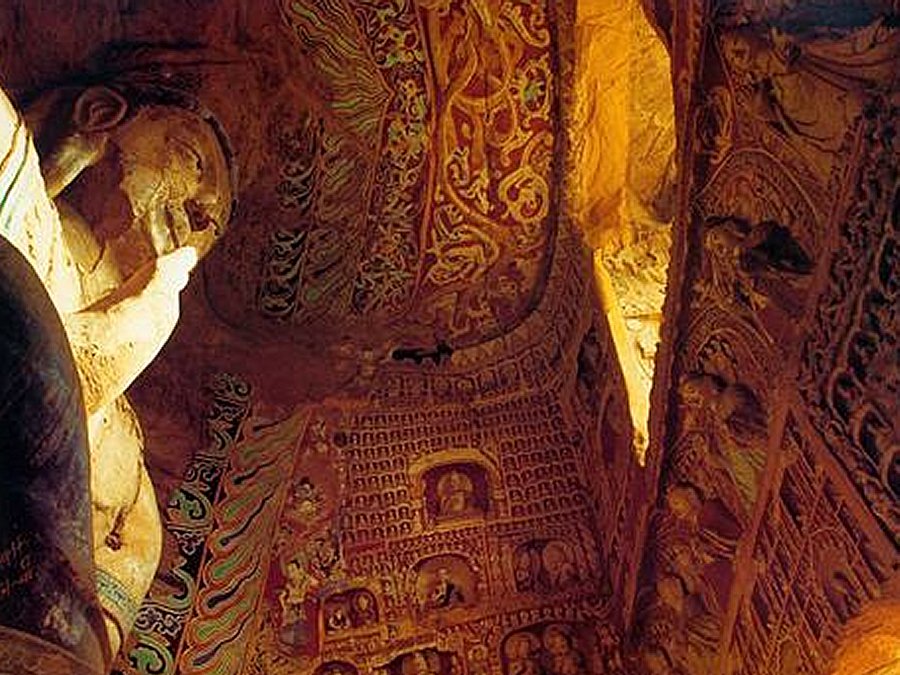
Three main periods can be identified in the construction: the Early Period (460-65), the Middle Period (c . 471-94) and the Late Period (494-525). Apart from the grottoes, the nominated core area includes the remains of a castle, a defence wall, and a beacon tower of the Ming dynasty on the plain above the grottoes. Credits: Cultural China
The ancient Chinese Buddhist temple grottoes that are excellent examples of rock-cut architecture, representing the outstanding Buddhist grotto arts of ancient China in the 5th to 6th century.
Yungang Grottoes were firstly cut in 453A.D. Although the statue making project lasted to 525A.D. most of the stone carvings in the grottoes were completed in 494A.D. Some 40,000 people, including the Buddhists from what is present Sri Lanka, contributed to the huge project.
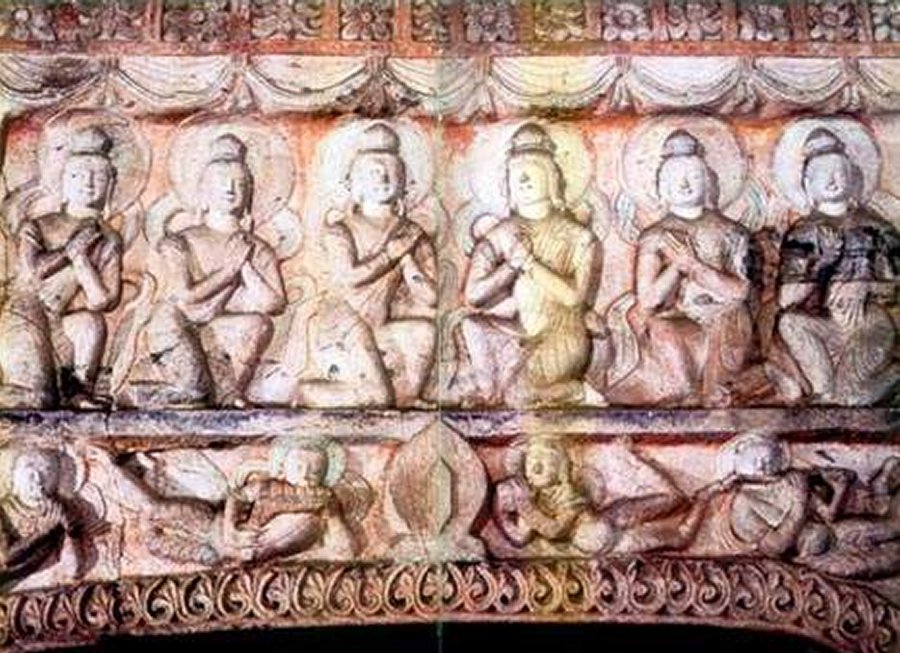
The arrangement and decoration of the grottoes predominantly demonstrates the style of Chinese buildings. In addition, the dance with accompaniment, Baixi (recreational activities of the masses) and acrobatics carvings left in the grottoes all reflect the characters of the ideas of Buddhism in different dynasties and the social life in these times.
According to the time of cutting, these grottoes can be divided into the early, middle and late stages.
The early statues are characterized by vigorous and unsophisticated customs of the Western Region while the grottoes of the middle stage are delicate and luxurious, showing complicated and changing artistic styles.
The move of the Northern Wei capital to Datong in 494 ended the intense period of construction and carving. There was some restoration during the Sui and Tang dynasties, and important repairs were carried out in the 11th and 12th centuries under the Liang Dynasty and later under the Qin.
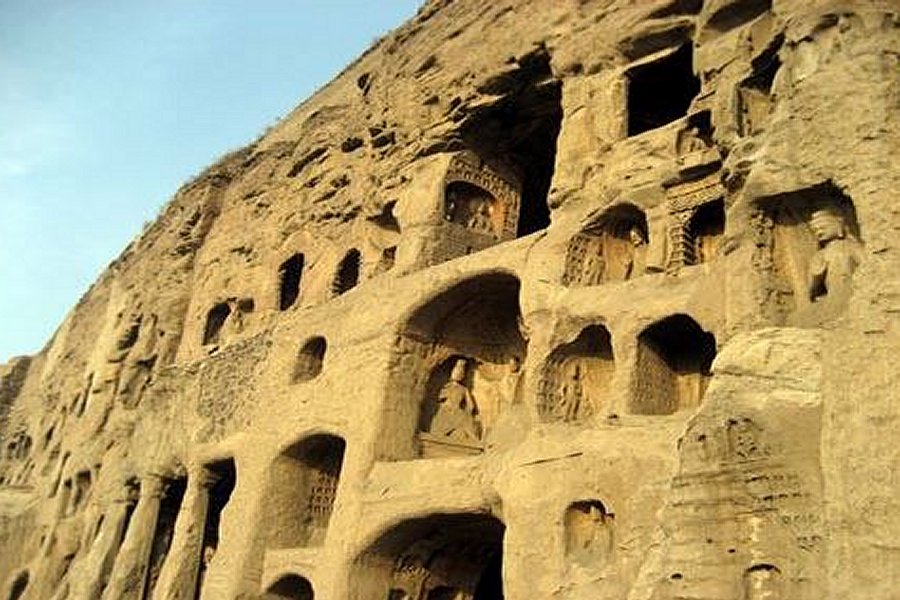
Carved out of a sandstone mountain these caves contain more than 50,000 Buddha sculptures with the oldest and the largest constructed in 460 AD. Credits: Cultural China
These restorations continue today. Much of its history lies shrouded in mystery. The cave sites have only few inscriptions.
The complex consists of large caves, including four groups of twin caves and one group of triple caves with the walls in the east, west and south sides, fully decorated with the statues of Buddha, even the roof is decorated with dancing fairies, centered with a lotus, which are very stately and graceful in appearance.
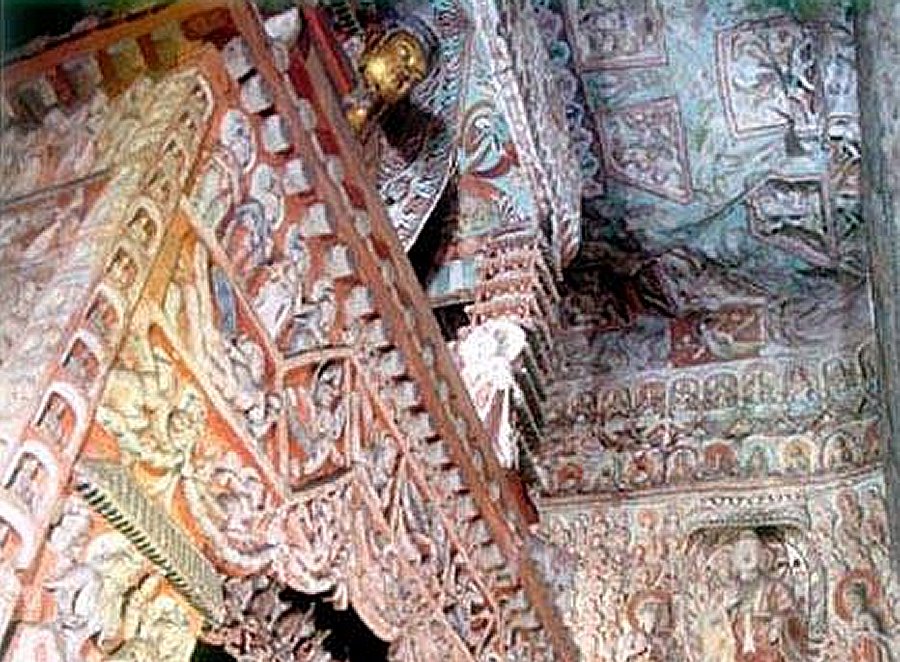
Yungang Grottoes, known as Wuzhoushan Grottoes. In 2001, the Yungang Grottoes were made a UNESCO World Heritage Site. Credits: Cultural China
The Chinese palace building carvings and the Chinese style niche evolved on this foundation were all widely used in the construction of grotto temples in later times.
Although the scale of the grottoes of the late stage was reduced, the proportion of characters was appropriate.
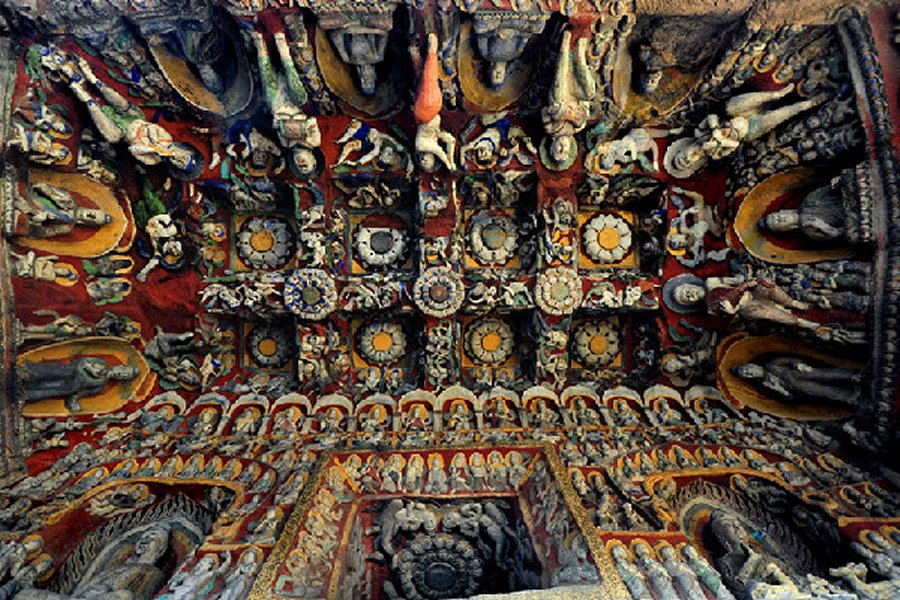
The Yungang Grottoes, in Datong city, Shanxi Province, with their 252 caves and 51,000 statues, represent the outstanding achievement of Buddhist cave art in China in the 5th and 6th centuries.
Credits: China Daily
The arrangement and decoration of the grottoes predominantly demonstrates the style of Chinese buildings.
In addition, the dance with accompaniment, Baixi (recreational activities of the masses) and acrobatics carvings left in the grottoes all reflect the characters of the ideas of Buddhism in different dynasties and the social life in these times.
The whole grotto complex is magnificent with delicate carvings. All the statues are precious and vivid, representing the development of art, architecture, music and religion at that time.
Yungang is a relic of the Northern Wei Dynasty (386-534) of the nomadic Toba people. They recruited 3,000 monks from along the Silk Route to turn Buddhism into their state religion.
In 2001, the Yungang Grottoes were made a UNESCO World Heritage Site.
Copyright © AncientPages.com All rights reserved. This material may not be published, broadcast, rewritten or redistributed in whole or part without the express written permission of AncientPages.com
Expand for references
More From Ancient Pages
-
 Secrets Of The Assyrian Dream Book And Dream Interpretation In The Ancient Near East
Featured Stories | Aug 6, 2021
Secrets Of The Assyrian Dream Book And Dream Interpretation In The Ancient Near East
Featured Stories | Aug 6, 2021 -
 Napta Playa – Egypt’s Stonehenge And Its Ancient Astronomical Alignments
Featured Stories | Feb 18, 2018
Napta Playa – Egypt’s Stonehenge And Its Ancient Astronomical Alignments
Featured Stories | Feb 18, 2018 -
 Legend Of Jin Chan: The ‘Golden Toad’ – Money Frog That Brings Luck And Is A Feng Shui Charm
Chinese Mythology | May 5, 2016
Legend Of Jin Chan: The ‘Golden Toad’ – Money Frog That Brings Luck And Is A Feng Shui Charm
Chinese Mythology | May 5, 2016 -
 Ancient Board Game Mancala Can Unlock Cutting-Edge Physics Discoveries
Artifacts | Sep 30, 2023
Ancient Board Game Mancala Can Unlock Cutting-Edge Physics Discoveries
Artifacts | Sep 30, 2023 -
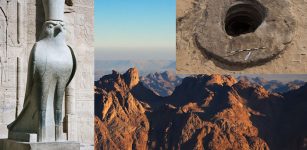 Pharaonic Water Wells Discovered For The First Time Near ‘Horus Road’ In Sinai, Egypt
Archaeology | Mar 1, 2022
Pharaonic Water Wells Discovered For The First Time Near ‘Horus Road’ In Sinai, Egypt
Archaeology | Mar 1, 2022 -
 Mysterious ‘Temple Of The Crossed Hands’ Of Kotosh – One Of The Oldest Structures In Peru
Featured Stories | Mar 15, 2023
Mysterious ‘Temple Of The Crossed Hands’ Of Kotosh – One Of The Oldest Structures In Peru
Featured Stories | Mar 15, 2023 -
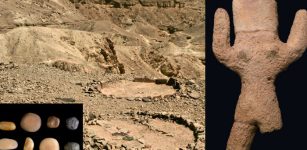 Ancient Artifacts Used In Magical Rituals To Ward Off The Evil Eye Found Next To The Pilgrimage Road
Archaeology | Sep 11, 2023
Ancient Artifacts Used In Magical Rituals To Ward Off The Evil Eye Found Next To The Pilgrimage Road
Archaeology | Sep 11, 2023 -
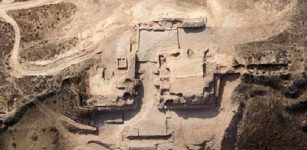 First Chinese Murals Unearthed In Shimao Ruins Are Over 4,000 Years Old
Archaeology | Aug 22, 2015
First Chinese Murals Unearthed In Shimao Ruins Are Over 4,000 Years Old
Archaeology | Aug 22, 2015 -
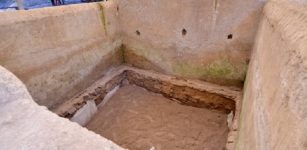 Necropolis of Porta Nola, Pompeii – new discoveries
Civilizations | Aug 30, 2015
Necropolis of Porta Nola, Pompeii – new discoveries
Civilizations | Aug 30, 2015 -
 Pompey The Great: One Of Roman Empire’s Most Successful Military Commanders
Featured Stories | Jun 14, 2019
Pompey The Great: One Of Roman Empire’s Most Successful Military Commanders
Featured Stories | Jun 14, 2019 -
 Secret Story Of The Ancient Bak’Ti Gods And Their Battle To Gain Control Over Humanity And Planet Earth – Told By Shamans
Ancient Mysteries | Jun 23, 2018
Secret Story Of The Ancient Bak’Ti Gods And Their Battle To Gain Control Over Humanity And Planet Earth – Told By Shamans
Ancient Mysteries | Jun 23, 2018 -
 Skeleton Of Irish Giant Charles Byrne Will Not Be Displayed In The Hunterian Museum In London
Historical Figures | Jan 13, 2023
Skeleton Of Irish Giant Charles Byrne Will Not Be Displayed In The Hunterian Museum In London
Historical Figures | Jan 13, 2023 -
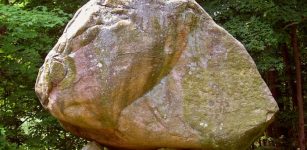 Mystery Of The Giant Boulder In North Salem
Featured Stories | Aug 8, 2019
Mystery Of The Giant Boulder In North Salem
Featured Stories | Aug 8, 2019 -
 First Cemetery Dated To Roman Period Discovered In North Saqqara, Egypt
Archaeology | Nov 12, 2019
First Cemetery Dated To Roman Period Discovered In North Saqqara, Egypt
Archaeology | Nov 12, 2019 -
 Yokai Kijo (Kidjo): Demoness, Cannibal With Hideous Heart Is A Moral Reminder In Japanese Beliefs
Featured Stories | Apr 28, 2024
Yokai Kijo (Kidjo): Demoness, Cannibal With Hideous Heart Is A Moral Reminder In Japanese Beliefs
Featured Stories | Apr 28, 2024 -
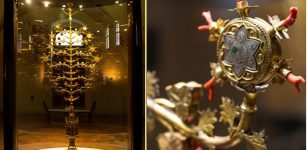 Missing Pieces Of The Magnificent Golden Tree Of Lucignano Discovered
Archaeology | Nov 6, 2023
Missing Pieces Of The Magnificent Golden Tree Of Lucignano Discovered
Archaeology | Nov 6, 2023 -
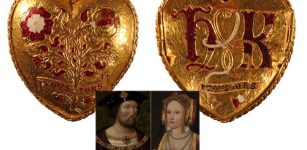 Beautiful Tudor Gold Pendant Linked To Henry VIII And Katherine Of Aragon Discovered By A Metal-Detectorist
Archaeology | Feb 1, 2023
Beautiful Tudor Gold Pendant Linked To Henry VIII And Katherine Of Aragon Discovered By A Metal-Detectorist
Archaeology | Feb 1, 2023 -
 DNA Unravels Mysteries Of The Crannogs, Ancient Artificial Islands Older Than Stonehenge
Archaeology | Oct 10, 2022
DNA Unravels Mysteries Of The Crannogs, Ancient Artificial Islands Older Than Stonehenge
Archaeology | Oct 10, 2022 -
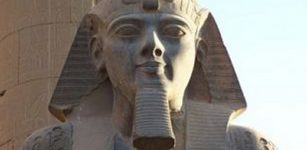 On This Day In History: Ramesses II Became Pharaoh Of Ancient Egypt – On May 31, 1279 BC
News | May 31, 2016
On This Day In History: Ramesses II Became Pharaoh Of Ancient Egypt – On May 31, 1279 BC
News | May 31, 2016 -
 Mysterious ‘Las Labradas’ Petroglyphs With Roots In The Pre-Columbian Times Of Mexico
Featured Stories | Oct 9, 2020
Mysterious ‘Las Labradas’ Petroglyphs With Roots In The Pre-Columbian Times Of Mexico
Featured Stories | Oct 9, 2020
